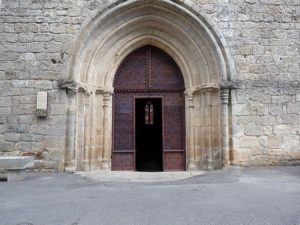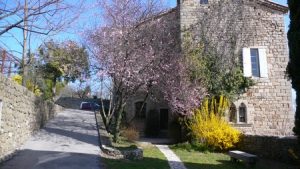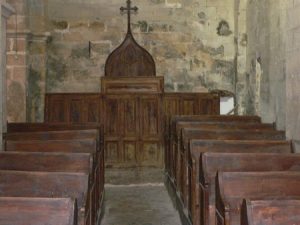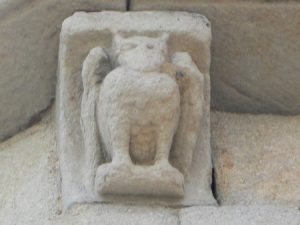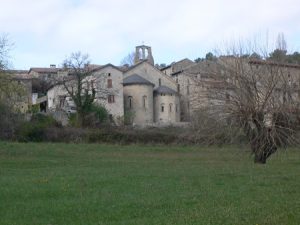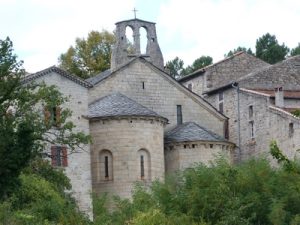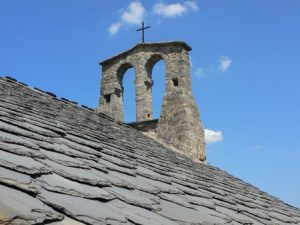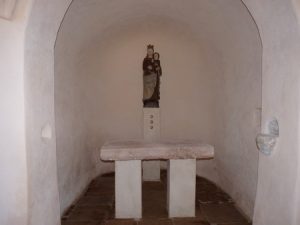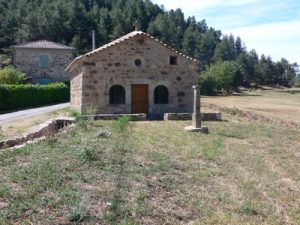“Saint-Hilaire” Church
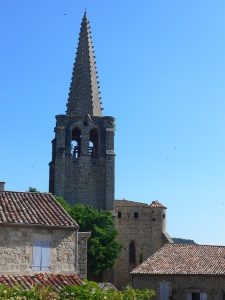 The Saint-Hilaire Church, a listed historical monument (rebuilt in 1396) is flanked by a dungeon with corner turrets, with an octagonal bell-tower rising 55 metres above it. It resembles a fortress as much as a Gothic church.
The Saint-Hilaire Church, a listed historical monument (rebuilt in 1396) is flanked by a dungeon with corner turrets, with an octagonal bell-tower rising 55 metres above it. It resembles a fortress as much as a Gothic church.
There are original sculptures on the tops of the columns and keystones, and a restored figure of Christ in painted wood, which probably came from a cross erected in the village square. Opposite the church lies the parish priest’s garden, an oasis of greenery and a haven of peace.
The Château de la “Vernade”
The Château de la Vernade, a former stronghold built in the 16th century, is now home to the Village Hall. It is made up of two buildings, a round tower and a magnificent spiral staircase. Close to the château you can admire the remains of a bossed tower, probably dating back to the 11th century.
“Saint-Benoît” Roman Chapel
The Saint-Benoît Roman chapel, a listed historical monument, is a jewel of Roman architecture. It is thought to have been a monastery around 550 AD. It constitutes a leg of the “Roman Churches in the Ardèche Valley” route. The building was erected with two unsymmetrical lateral naves extended by two apses, distinctive because one is polygonal and the other semi-circular. It is also remarkable for its volume, the quality of the sandstone used, its supple lines and the variety of the modillions decorating the outdoor cornice.
“Notre-Dame Bonne-Rencontre” Chapel
The “Notre-Dame de Bon-Rencontre” chapel, opposite the hamlets of Joux and la Rouvière, lies 3 kilometres from the centre of the village. This ancient place of pilgrimage has been meticulously restored.
“Saint-Joseph” Chapel
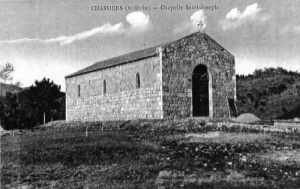 In 1944, during the months of ominous threats, the parishioners expressed a desire. Thinking of the prisoners, of the people who were engaged in the Resistance and Nazi reprisals, they decided to build a chapel dedicated to Saint Joseph on a plot of land donated by the VERNEDE family. The project, which many people from the village of Chassiers were involved with, was led by the Abbot HILAIRE and continued by Abbot ALLEMAND. The chapel was inaugurated in 1950. Set at a distance from the village, it became a meeting place for prayer or somewhere to aim for whilst out for a stroll. Damaged by bad weather, only the façade has been preserved as well as the statue of Saint Joseph, which used to be in the sanctuary.
In 1944, during the months of ominous threats, the parishioners expressed a desire. Thinking of the prisoners, of the people who were engaged in the Resistance and Nazi reprisals, they decided to build a chapel dedicated to Saint Joseph on a plot of land donated by the VERNEDE family. The project, which many people from the village of Chassiers were involved with, was led by the Abbot HILAIRE and continued by Abbot ALLEMAND. The chapel was inaugurated in 1950. Set at a distance from the village, it became a meeting place for prayer or somewhere to aim for whilst out for a stroll. Damaged by bad weather, only the façade has been preserved as well as the statue of Saint Joseph, which used to be in the sanctuary.
“Chalendar de la Motte” castle
 This castle was left in ruins several times, in particular, in 1568 after it was set alight by the Protestants, and at the end of the 19th century when it was allowed to fall into disrepair.
This castle was left in ruins several times, in particular, in 1568 after it was set alight by the Protestants, and at the end of the 19th century when it was allowed to fall into disrepair.
Carefully restored, it has several aspects that appear contradictory – from an elegant summer house with a Florentine feel to a stronghold, with its huge tower, horizontal arrow slits, beautiful, sculpted, arched doorway, machicolation, sentry towers and corner watch-turrets. It is now a private property.

